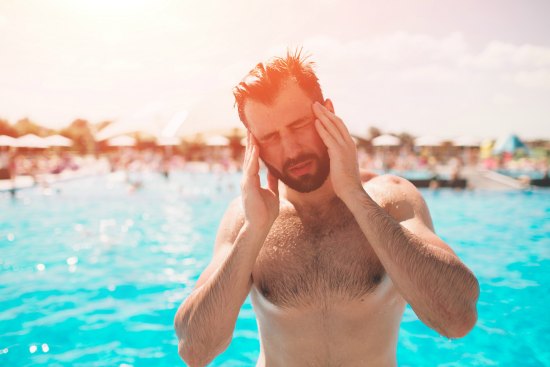
First, let’s repeat what we’ve covered in other articles. Thirst is actually a late sign of dehydration. What this means is that your body becomes dehydrated before thirst kicks in and prompts you to drink. Another problem is with osmoreceptors. Without delving too deeply and allowing confusion, these osmoreceptors in your brain help to regulate the concentration of your bloodstream, an area you can’t just “dump” water into to replace without affecting blood concentrations and components.
For this reason, it is important to follow preventative measures by drinking water regularly before an incident occurs. The osmoreceptors will prompt you (along with a feeling of fullness) not to drink anymore until your bloodstream is balanced. It is for this reason that IV solutions are isotonic…that is, compatible with your bloodstream and body chemistry. I detailed in articles past that you can purchase isotonic packets that are very beneficial and easy to use.
Trace Minerals Research is the type that I use. The packets are 0.18 oz/5 grams. They are for the replacement of electrolytes, Sodium, Potassium, Calcium, and Magnesium being among them. These packets are akin to powdered gold, and they can really be useful after you’ve had a grueling workout or a hard shift at work to replace the electrolytes you lost along with the fluid.
The best time for physical exercise is usually during the peak performance hours of 3 to 4 pm; however, these changes in the summer months. I recommend working out in either the early morning an hour or more before sunrise, or in the evening at about 6 pm to avoid the heat of the day. Wherever you travel, it is important that you take a good water supply. During the summertime, you should be drinking (on average) a gallon of water per day, and for jobs and actions with a lot of physical labor, even more.
Coldwater will help bring your core temperature down if you become overheated. Avoid cold fruit juices, as these have a lot of sugar in them (whether from natural or processed sources) and will deplete your hydration levels. The sugar works from a reverse osmotic angle and draws water out of your system in order to help you process the juice. Water or an isotonic solution, such as an ORS (Oral Rehydration Solution) is your best bet. The sports drinks have a ton of sugar in them and a bunch of different chemicals that you may not want.
Make your own ORS solution with a 32-ounce bottle. Fill it up with water and add ½ tsp. of salt and 1 tablespoon of honey or raw, unprocessed sugar, or use some of these ORS powder recipes. This amount will not be enough to detract from the solution’s isotonicity, and it will give you a few calories if you’re energy-depleted. Food intake is also critical to prevent dehydration. The nightly meal is an important one. I have emphasized in the past to take a good protein shake before you go to bed. This will be a “booster” for your training, as well as replenishing and creating stores while you sleep…the process where your metabolism slows down and you have more of the benefits from the shake. Those shakes also have electrolytes. You’ll give yourself an edge even before you awaken and start the next day.
Before you start your strenuous activities in a workout or on the job, hydrate up and drink about a half a quart to a quart of water before you begin. The cold water will cool you down if you’re overheating, but the best way to drink water under normal circumstances is at room temperature. Your body receives less of a shock when you take it in, as it is closer to your own body temperature. Hydration is hydration, plain and simple, and the water does not need to be cold to be taken in. It is partially a matter of preference.
You can measure your body’s balance by your output, as well. Dark or extremely-yellow urine is a very reliable sign. The darker your urine (not considering underlying health conditions or medications), the more water your body needs. It is trying to retain water and excreting urine that is dark with a lot of filtrates and less actual water in it. Dark urine is a sign that you need to drink water as soon as possible. Another thing is skin turgidity. The skin on the back of your hands is elastic. If you pull up on it and it returns to normal immediately, that’s good. If it kind of “withers” and “shrivels,” taking a second or two to return to normal? This is a sign that you are dehydrated.
Other signs are aching teeth, a thready, rapid pulse, a headache, and visual disturbances, such as blurriness or inability to focus properly. On these, you’ll do better to down one of those electrolyte packets we covered, as well as increase the intake of water. Eat well-rounded and regular meals. Not only do you obtain some water in your food, but the foods contain salts, electrolytes, and other essential vitamins and minerals that help you maintain a healthy fluid balance. An ounce of prevention is worth a pound of cure in this case. Prevent dehydration by taking these steps and enjoy your summer…the safe way. JJ out!

Whoever made that poster just couldn’t resist throwing in a mention of “climate change”. News flash: hot weather is nothing new.